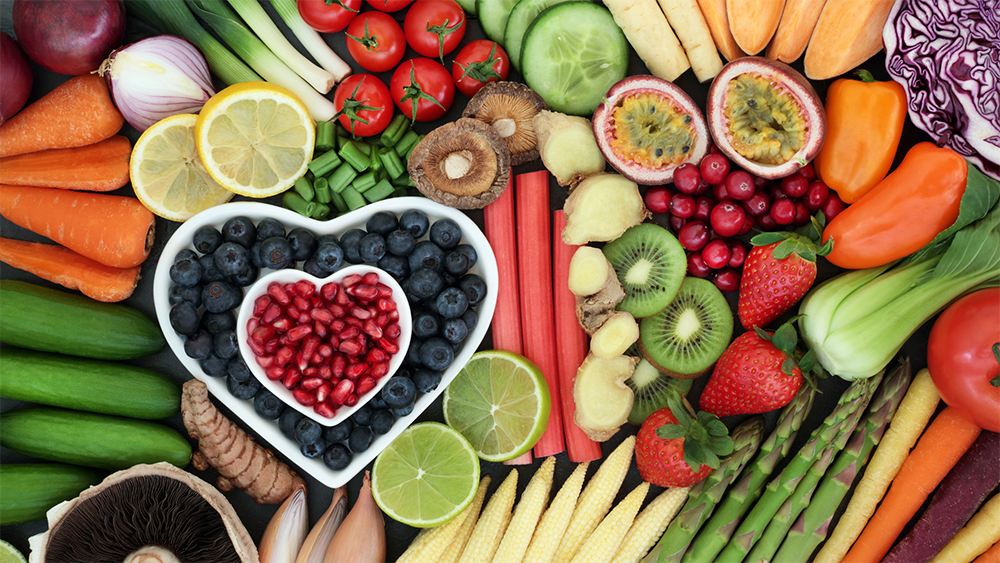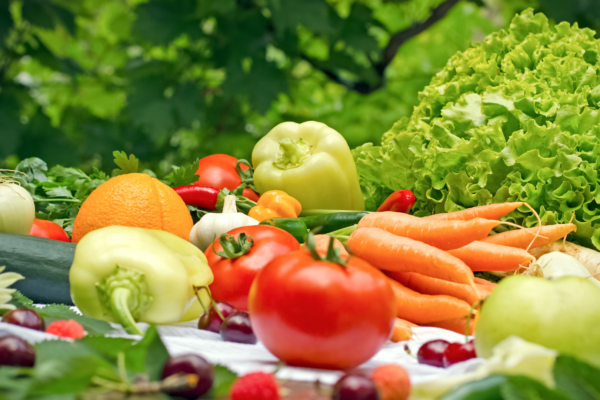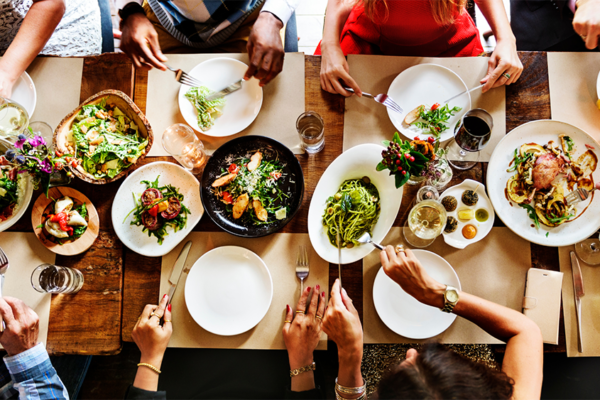
Nudging: What is it, what nudges are available, and how can the gastronomy use them to help customers act more sustainably?
By Foodways
The gastronomy has a major influence on people’s consumption behavior. It can influence the eating decisions of its clientele through its offering, presentation and communication. This gentle influence is called nudging. It can bring both environmental and economic benefits. After all, sustainable nutrition not only means less environmental impact, but also more health, more variety and more enjoyment.
What is Nudging?
Nudging is a method from behavioral economics that subtly encourages people to make certain decisions or change behavior. Very importantly, it does not restrict people’s freedom of choice, but merely shapes the decision-making environment in such a way that the desired option becomes more attractive or easier. Nudging is popularly used in the area of sustainability and environmental protection.
An example of a nudge, is placing fruits and vegetables in a highly visible location in the supermarket, while unhealthy snacks do not immediately catch the eye. This increases the likelihood that customers will reach for the healthier foods. Another example is the pre-selection of green power in electricity contracts. Such nudges are designed to encourage customers in a wide variety of sectors to make more climate-friendly choices.
But why do we need nudging at all? It is unfortunately necessary, especially in times of climate change, because we humans often don’t act the way we want or should. We are creatures of habit, guided by convenience, short-term thinking, status orientation or social imitation. We are also often unaware of the consequences of our consumer behavior for the environment and society. Therefore, sometimes we need a little nudge to choose the more sustainable option. Nudging can be applied in almost all areas of daily consumption. But in this blog post, we’ll focus on gastronomy and show how nudges can be used to encourage clientele to eat and drink more sustainably.
A path to greater sustainability in gastronomy
One nudge that benefits both the climate and health is to reduce the amount of meat on menus. After all, meat has a high environmental footprint, and too many processed meat products are not beneficial to health either. By changing the presentation of the menu, customers can be encouraged to choose more vegetarian or vegan dishes. This can be done, for example, by prominently placing meatless dishes at the beginning or end of the menu, by providing an appealing description, or by labeling them with symbols such as a green leaf or a heart. A 2016 field trial by Gravert and Kurz, which we discuss in more detail later in the article, showed that certain nudges can increase the proportion of vegetarian orders by up to 40 percentage points.
Nudges that encourage the use of reusable systems for drinks or takeaway food are also effective tools. After all, single-use packaging creates a lot of waste, consumes resources unnecessarily and is better avoided. Various incentives can be created to encourage customers to use reusable containers. Discounts or bonus points for using reusable containers are conceivable. Or an additional fee can be charged for single-use containers. These nudges can significantly increase demand for reusable systems, as various practical examples show. A third sensible nudge in gastronomy is to reduce food waste. After all, this is not only an ecological and ethical problem, but also an economic loss for gastronomy businesses. To reduce food waste, for example, portion sizes can be adjusted or a choice between different portion sizes can be offered.
A field trial: How effective are nudges in foodservice?
A study on the effectiveness of nudges by Christina Gravert and Verena Kurz is based on an experiment conducted in a restaurant in Gothenburg in 2016. The researchers tested different nudging measures to reduce the consumption of meat and increase that of vegetarian dishes. They used the following types of nudging:
Defaults are presets or standards that can influence behavior if people do not deviate from them. For example, a restaurant may offer the vegetarian or vegan option as the default on the menu and label the meat dishes as an additional option. This may lead more people to choose the plant-based alternative because it is less hassle or because it is perceived as more socially desirable.
Information nudges are measures that provide people with additional information that can influence their decision. For example, in a restaurant, the origin and environmental footprint of the food can be indicated on the menu or labeled with symbols such as the organic seal or the Fairtrade logo. This can lead to more people choosing the more sustainable option because they are better informed or because they want to have a clear conscience.
Social Norm: The sustainable option is associated with a reference to other people’s behavior. For example, a meatless dish is tagged with a sign saying “Our guests’ favorite dish” or a regional drink is tagged with a sign saying “This is what the locals drink.”
Framing: positive or negative associations are attached to the sustainable option. For example, a vegetarian dish is given a name like “Garden Joy” or “Fit Maker” or a meat-based dish is given a name like “Climate Killer” or “Heart Attack.”
The specific measures within the experiment were:
- Vegetarian dishes were placed at the beginning of the menu.
- Vegetarian dishes were additionally highlighted by a green frame or a green symbol.
- The vegetarian dishes were also described using particularly positive wording.
- The specific carbon footprint was given for each dish.
The researchers recorded and analyzed the orders and the satisfaction of the guests before and after the nudging measures. They also asked about the guests’ attitudes and motives regarding their diet and climate protection.
Key findings of the experiment:
- Placing vegetarian dishes at the beginning of the menu had the greatest effect. The likelihood of choosing a vegetarian dish was 40 percent higher than with a regular menu.
- Using positive descriptions for the vegetarian dishes had a moderate effect. The likelihood of choosing a vegetarian dish was 14 percent higher than with a neutral description.
- Highlighting vegetarian dishes with a green border or symbol had no significant effect on orders.
- Specifying the carbon footprint for each dish actually had a negative effect on orders. The probability of choosing a vegetarian dish was 15 percent lower.
- In general, it can be said that the guests’ satisfaction with the food and the restaurant was not affected by the nudging measures.
- The attitudes and motives of the guests regarding their diet and climate protection also had an influence on the response to the nudging measures. Guests who identified themselves as flexitarians or had high environmental motivations were generally more likely to choose a vegetarian dish than guests who identified themselves as meat eaters or had low environmental motivations. The experiment shows that nudging in gastronomy can be effective in reducing meat consumption. However, the effect depends strongly on the type of measure and the profile of the guests.
What other measures are there?
The experiment illustrates that there are many ways that restaurants can use nudges to encourage their clientele to be more sustainable. Here are a few more suggestions:
- The arrangement of food and beverages on the menu or buffet can have a significant impact on choice. For example, healthier or more environmentally friendly options can be highlighted in a particularly attractive way or placed in a particularly visible location.
- Portion size can also have an effect. For example, smaller plates or glasses can be used to reduce consumption but still make guests feel like they are getting a well-filled plate.
- An appealing presentation of food and beverages on the menu can also be important. This can be accomplished, for example, with attractive images or descriptions that spark interest or create positive associations.
- Communication with clientele can also make a difference. Transparent information about the origin or ingredients of food and beverages can increase awareness or trust.
- Using social norms or feedback can also be effective. It can be helpful to show how many other guests have chosen a particular option, or how much energy or water has been saved.
How does gastronomy itself benefit from the use of nudges?
It stands to reason that nudging can be a useful tool to encourage clientele to adopt more sustainable and health-conscious behaviors. But why would gastronomy want to implement such measures in challenging economic times? There are several reasons:
Nudging can increase customer satisfaction and retention. After all, those who feel well-informed and comfortable will be more likely to return or leave a positive review. The measures can also reduce costs and thus increase profits. After all, if less is thrown away, for example through smaller portions, that can reduce expenses or increase revenue. And if a restaurant is committed to sustainability and communicates this clearly, it can improve its image and attract new customer groups. So overall, nudging is a promising way to get people to act more sustainably and, at the same time, improve profitability in the restaurant industry. However, nudges should always be designed in such a way that customers have the freedom to make their own decisions. Nudging should be understood as a stimulus, not a constraint.
Foodways







